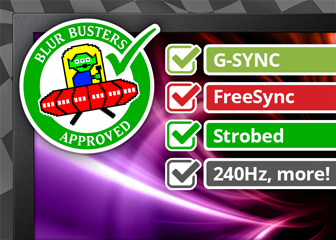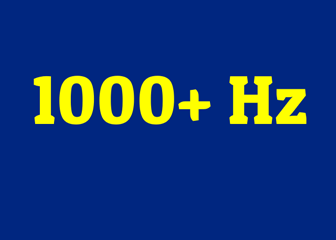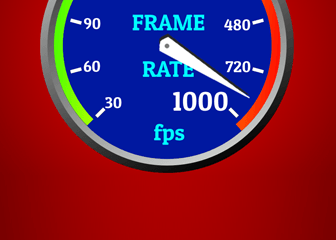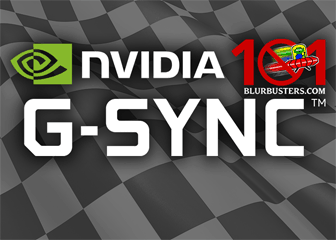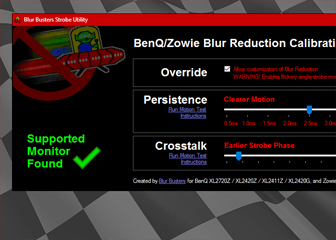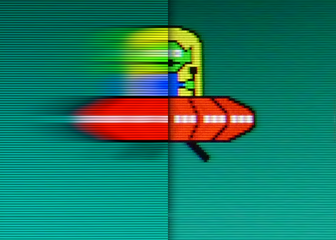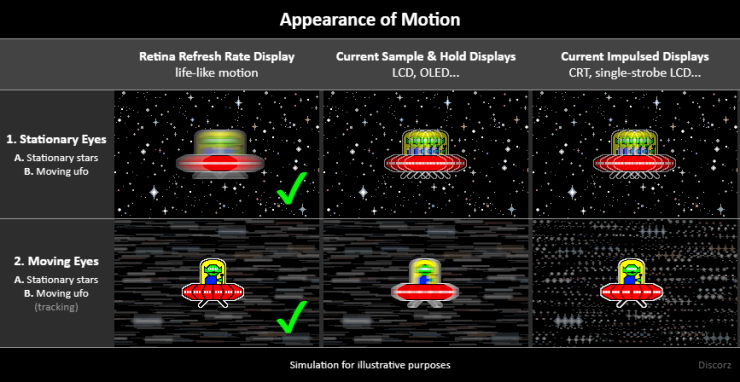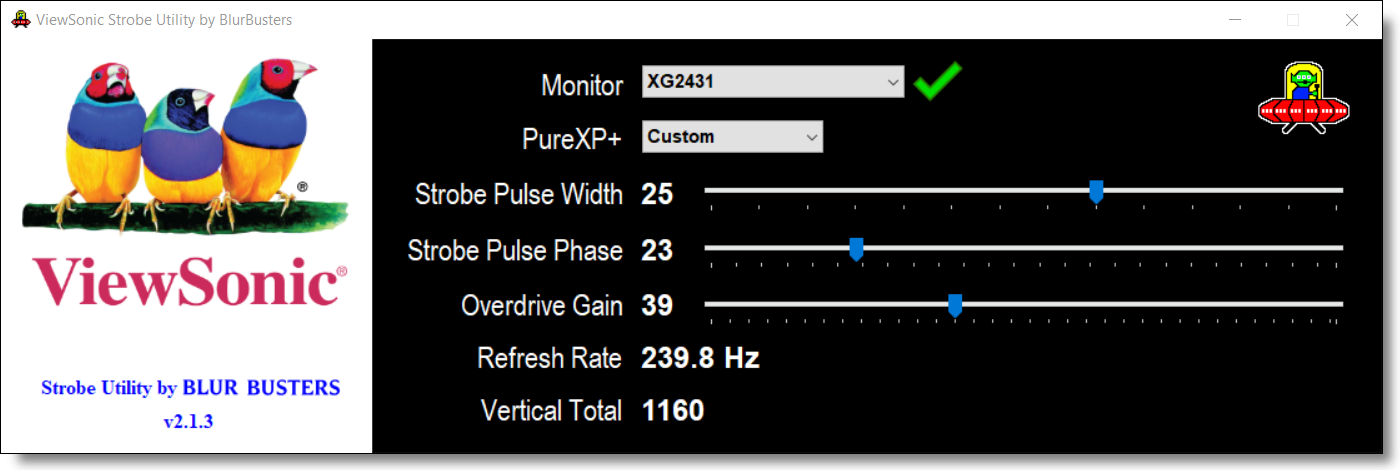ViewSonic XG2431 Analysis – A Blur Busters Fan’s Deep Dive of Motion Blur Reduction
Foreword by Blur Busters Founder Mark Rejhon
I helped ViewSonic create one of the world’s most flexible motion blur reduction modes, the Blur Busters Approved ViewSonic XG2431 monitor. capable of completely crosstalk-free motion blur reduction (*via special tweaks most reviewers did not do). This is the very ViewSonic XG2431 review I wished display reviewers would focus on, especially the crosstalk-reducing hacks (Large Vertical Totals).
Normally, Blur Busters does not publish display reviews; we simply focus on inventing tests for other display reviewers, creating open source display algorithms, and creating peer-reviewed research. However, we do occasionally publish specials about specific display state of arts. This special is about the pinnacle of low-Hz LCD motion blur reduction (at the time). Without further ado, here’s Discorz’ comprehensive motion blur tests of the Viewsonic XG2431, featuring the Blur Busters Approved strobe mode:
Motion Blur Reduction – PureXP Performance
Introduction
PureXP is a feature which by rapidly switching the backlight on/off between frames reduces frame visibility time. The “now you see me, now you don’t” effect of flickering lights create gaps in retinal persistence, which can help reduce the blur that our eyes create during movement. How long the backlight is flashed during one refresh cycle will determine the initial MPRT (Motion Picture Response Time). The quicker the flash, the larger the motion resolution and you can eye-track faster motion more clearly.
To take full advantage of strobing, operation needs to be done correctly and precisely and this is where Blur Busters Approved certification comes in. Back in 2019-20 ViewSonic released world’s first Blur Busters Approved 1.0 gaming monitor, XG270. A year later a more strict version 2.0 certification programme was announced which should guarantee even better performance. XG2431 is first to receive 2.0 label for its PureXP mode.
Quote Blur Busters:
Blur Busters Approved is a certification programme that validates the quality of display motion on screens. For years, many LCD screens have had excessive amounts of motion blur. The goal of Blur Busters Approved is to further improve the quality of display motion blur reduction, improving user experience, getting better reviews and ratings.
Quote ViewSonic:
XG2431 is the first monitor to pass the rigorous testing thresholds of Blur Busters Approved 2.0 The PureXP motion blur reduction feature on XG2431 includes easy settings pre-tuned by Blur Busters that are pre-installed at the factory. In addition, an optional Custom PureXP mode can be tuned by end users via an optional ViewSonic Strobe Utility, via download, to achieve custom measured MPRT as low as approximately 0.1ms, or to achieve a brighter low-crosstalk strobe.
Blur Busters Approved 2.0 Rules:
• Reduced strobe crosstalk for motion clarity closer to CRT motion clarity;
• Easy High Quality Pre-Tuned Strobe (60, 100, 120, 144, 240 Hz) via monitor menu!
• Retro Friendly Strobe (60 Hz) for consoles, TV, and emulators! (MAME, RetroArch, YouTube, TV, etc);
• Strobe any Hz in 0.001 Hz increments. No preset refresh rate limitation!
• Strobe any video or television source, not just GPUs!
• Optional Strobe Utility support;
• Optional Large Vertical Total support for strobe crosstalk reductions;
• Optional Quick Frame Transport support for low lag strobing.
First let’s remind ourselves of the very basics – The way motion appears in real life or on screens heavily depends on whether our eyes are still or moving and whether the scenery is static or in motion. There can be:
1. Stationary Eyes or 2. Moving Eyes viewing A. Stationary Images and B. Moving Images. We encounter various combinations of these.
When doing 2B in real life (perfectly tracking a moving object), we see perfect motion clarity (2B = 1A). Similarly, when doing 1B and 2A, we see perfect motion blurrity (2A = 1B). Keep in mind that due to the nature of visual persistence, in some of these scenarios flicker-based blur reduction helps a lot (2B), while in others not as much or at all (1B). In some it fails to replicate real-life motion accurately (2A). Brute sample rate on the other hand improves motion resolution across all scenarios. This is why impulse-based MPRT is not always 100% comparable to sample-and-hold MPRT.
If your content requires frequent eye tracking (2B), technologies like PureXP can be highly beneficial. If not, you might not find it very useful. Your mileage may vary! To illustrate the advantages of blur reduction tech, we’ll use pursuit camera technique as a simulation of eye-tracking.
Glossary
- Strobe type: global shutter backlight + rolling shutter scan-out
MPRT: 0.04 – 6.78 ms target, adjustable via presets or Pulse Width
Brightness: ~5 to 208 cd/m² white, adjustable via presets or Pulse Width - Refresh rate: fixed 59 – 241 Hz, custom resolutions via third-party software in 0.001 Hz increments
Scan-out velocity: standard, Vertical Total adjustable via third-party software - Backlight response: W-LED (YAG phosphor), ~0.05 ms GtG, square wave pulse
Pulse rate: 1 pulse per frame target
Pulse width: 4 presets 10-40% duty cycle, 40 levels via Strobe Utility Custom preset 1-40% duty cycle
Pulse height: fixed ~520 cd/m²
Pulse phase: automatic via 4 presets intended for standard Vertical Totals, adjustable via Strobe Utility Custom preset 100 levels - Pixel response: fast IPS, on average down to ~9 ms of complete GtG without errors
Overdrive: automatic via presets, adjustable via Strobe Utility Custom preset, 100 levels - Latency: standard, adjustable via Vertical Total and Pulse Phase
